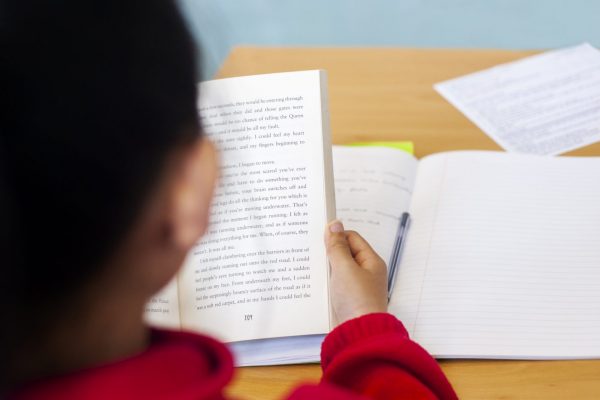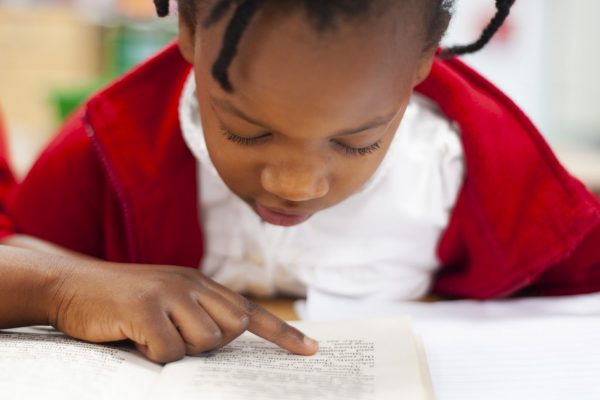Implementation
Early Years
In Nursery, early phonological games and activities are taught which concentrate on developing children’s speaking and listening skills and lays the foundations for the introduction of our systematic synthetic teaching of phonics. The emphasis during early phonological games and activities is to get children attuned to the sounds around them and ready to begin developing oral blending and segmenting skills. The focus is broken into different aspects: Tuning in to sounds (auditory discrimination), Listening and remembering sounds (auditory memory and sequencing) and Talking about sounds (developing vocabulary and language comprehension).
Letters and their sounds are introduced one at a time in a sequential order supported by Success for All, fast track phonics program. A letter a week is taught during the summer term. As soon as letters are introduced, children will be encouraged to use their knowledge of the letter sounds to blend and sound out words.
In Reception, children quickly consolidate letter-sound correspondence introduced in Nursery and begin word level blending and segmenting. Two letter sounds are learned across the week through the use of colourful mnemonic picture cards, rhymes, chants and props to bring the lessons alive. There is plenty of opportunity for partner work and celebrating learning. Children master the following skills of auditory blending and segmenting, letter-sound correspondence, word-level blending and sound spelling.
From the spring term, children engage in small guided reading session four times a week. In these sessions children have the opportunity to read as a group, with a partner and independently, developing essential early reading skills.
In Nursery and Reception we have books in all areas of the class to develop a culture and love of books. In Literacy we teach and read a whole class text in a three week cycle using Pie Corbett Talk for Writing. We use these books as core curriculum focus whereby it links to all areas of the curriculum.
Key Stage One
In Key Stage One, reading is taught in streamed groupings, four times a week. The sequence of lessons throughout the week follows the structure outlined below.
Day 1:
Lessons begin with a phonics session where sounds previously taught are recapped. This is followed by auditory blending (say-it-fast) and auditory segmentation (break-it-down) of words containing known sounds. 6 green words are reviewed on cards for children to stretch and read. A new sound is introduced in which children hear the sound, say the sound, see the sound and then read words containing the new sound. Children have the opportunity to practise writing the sound identifying special friends. Children are then introduced to a focused reading text in which they preview and predict elements of the text. Children are introduced to green and red words and practise with partners. Children then engage in a guided reading session, followed by discussion questions and a review of the word wall.
Vocab activity: New vocabulary is introduced using my turn, your turn and actions which support them with understanding the definition of the key word in the context of the text.
Day 2 & 3:
Sessions begin with a phonics session reviewing sounds already learnt, followed by auditory blending (say-it-fast) and auditory segmentation (break-it-down) of words containing known sounds. 6 green words are reviewed on cards for children to stretch and read. Children review the new sound taught the previous session and practise spelling words containing the sound. Children then review the group text, adult models focus reading strategy. Children practise reading the green and red words with a partner and then read the text with their partner and answer comprehension questions to develop a particular skill.
Vocab activity: Recap new vocabulary using my turn, your turn and take turns reading with partners. Children to complete application tasks based around language such as: odd one out, matching pictures to words, finding synonyms, which is the correct definition.
Day 4:
Sessions begin with a phonics session reviewing sounds already learnt, followed by auditory blending (say-it-fast) and auditory segmentation (break-it-down) of words containing known sounds. 6 green words are reviewed on cards for children to stretch and read. A new sound is introduced in which children hear the sound, say the sound, see the sound and then read words containing the new sound. Children have the opportunity to practise writing the sound identifying special friends. Adult re-models focus reading strategy before children practise with their partner reading green and red words and then read group text independently. Whilst reading children will be asked to complete a fluency test. Children will independently answer comprehension questions.
Regular assessments are used to inform children’s book band level to ensure that the appropriate home reader books are available to them and they are in the appropriate reading group.
Vocab activity: Recap new vocabulary and children to complete assessment tasks based around language such as: using key words in sentences generated by the children, cloze activities where children insert the missing word and matching words to the correct definition.
Key Stage Two
In Key Stage Two, reading is taught in streamed groupings, four times a week. The sequence of lessons throughout the week follows the structure outlined below.
Day 1:
Vocab activity: Years 3-6 begin by unpicking a range of new vocabulary words based on the pages/chapters that will be covered in the lesson. Teachers identify unknown vocabulary for the children and carry out an activity around finding the unknown word’s definition by identifying its word class and using the context of the sentence/chapter to help.
Children then read selected pages from their reading book as a group, and answer comprehension questions collaboratively based on what they have read. This encourages children to discuss what they have read, summarise, unpick language and retrieve information.
On day 1, the children are also expected to complete a partner fluency. One partner reads to the other against a one minute timer; they then count the number of word which were read during that time.
Day 2:
Vocab activity: Years 3-6 begin by unpicking a range of new vocabulary words based on the pages/chapters that will be covered in the lesson. Teachers identify unknown vocabulary for the children and carry out an activity around finding the unknown word’s definition by identifying its word class and using the context of the sentence/chapter to help.
Children then read selected pages from their reading book with their partner, and answer comprehension questions based on what they have read. This encourages children to discuss what they have read, summarise, unpick language and infer characters’ thoughts and feelings, before using the plenary time to go through their answers and self-correct where necessary.
Day 3:
Vocab activity: Years 3-6 begin by unpicking a range of new vocabulary words based on the pages/chapters that will be covered in the lesson. Teachers identify unknown vocabulary for the children and carry out an activity around finding the unknown word’s definition by identifying its word class and using the context of the sentence/chapter to help.
Children then read selected pages from their reading book independently, and answer a ‘test it’ based on what they have read. This encourages children to become a more independent reader, whereby they analyse as they read. They will then be required to answer questions using a range of skills developed throughout the week, such as: summarise, define language, infer characters’ thoughts and feelings and predict what may happen next using evidence. During this lesson, children are also required to complete a fluency assessment whereby they read a passage for a minute and record how many words they were able to read. This is an opportunity for children to also be assessed on how well they can read with expression, reflect the punctuation and develop their speaking and listening skills. The ‘test it’ is then marked in depth by the teacher and key skills which require further support and development are identified so that planning and teaching is more meaningful.
In order to ensure that all fundamentals have been fully met by the end of each academic year, teachers focus on a different skill each week (eg. inference, deduction, purpose and evaluation, word meaning, prediction, fluency etc…) in the autumn term. This means that by spring, the children are ready to answer a range of question types and develop these further throughout each week.
Day 4:
Extract activity: All year groups unpick an unknown extract taken from a variety of different texts; including poetry, fiction and non-fiction. They clarify the meaning of unknown words through context and discuss the power of language and authorial choices of the extract. They read and discuss the extract with the teacher, answer the questions independently and mark their work.
The teacher goes through each question with the children, discussing key words and strategies which should be used to answer them. A self assessment is completed at the end of the lesson.
































